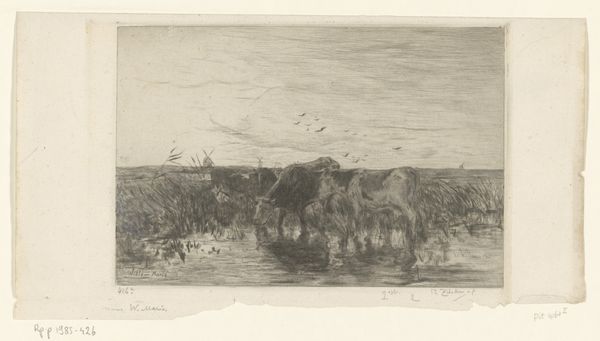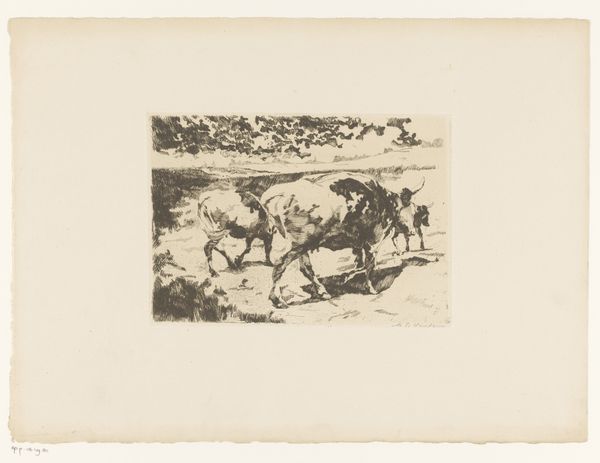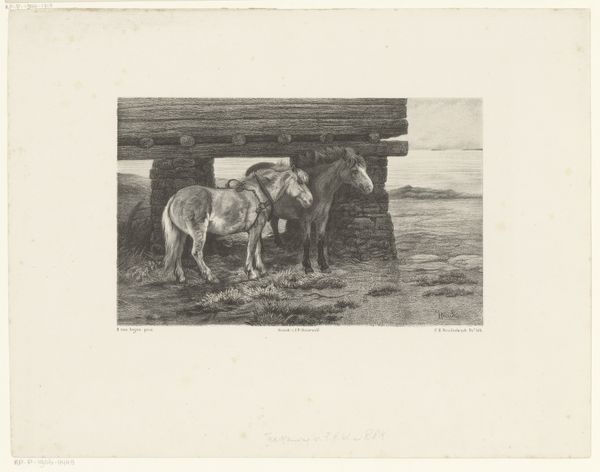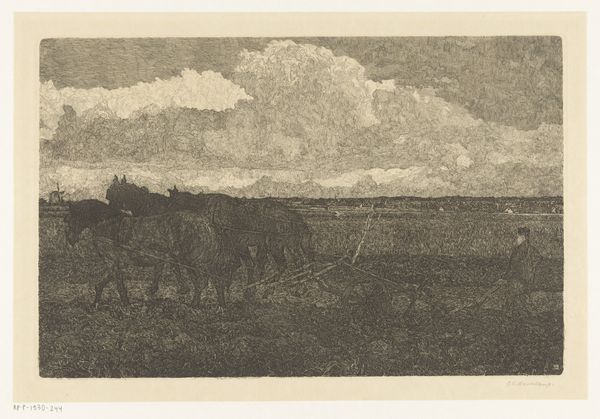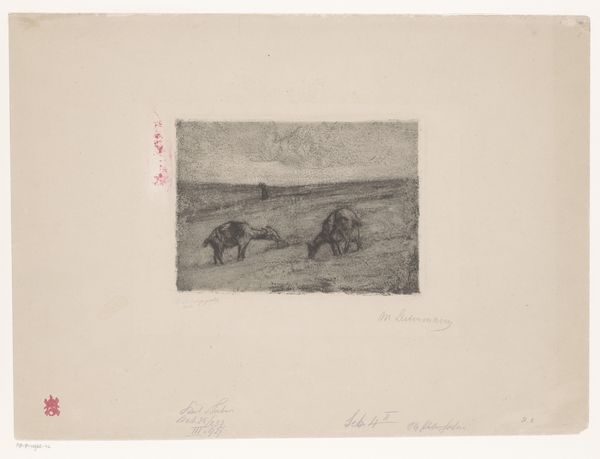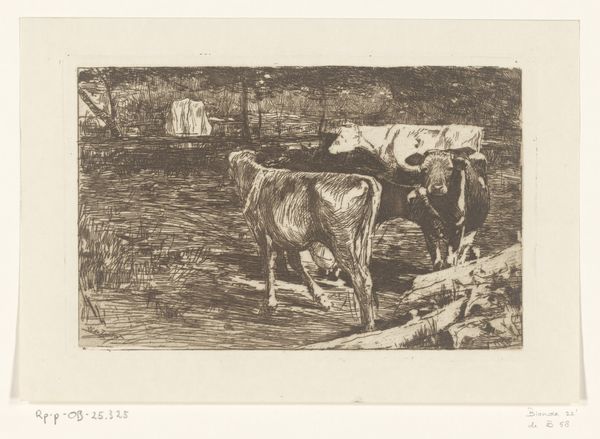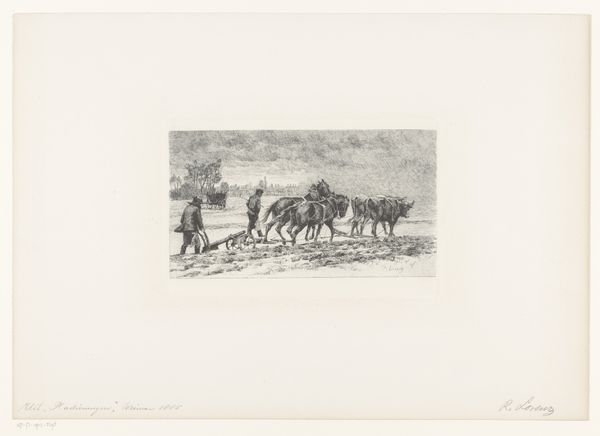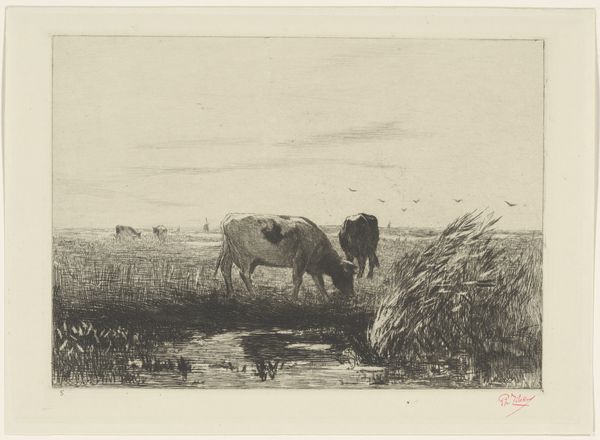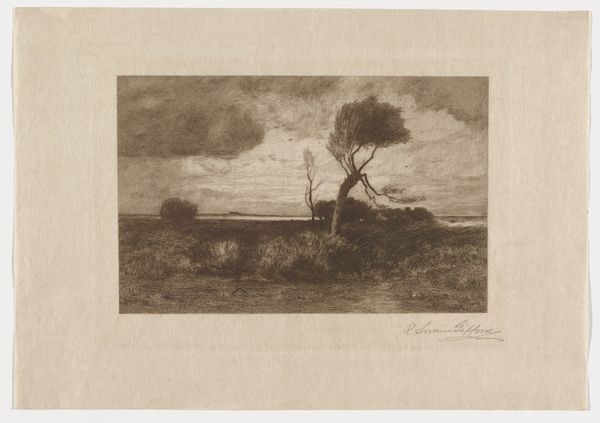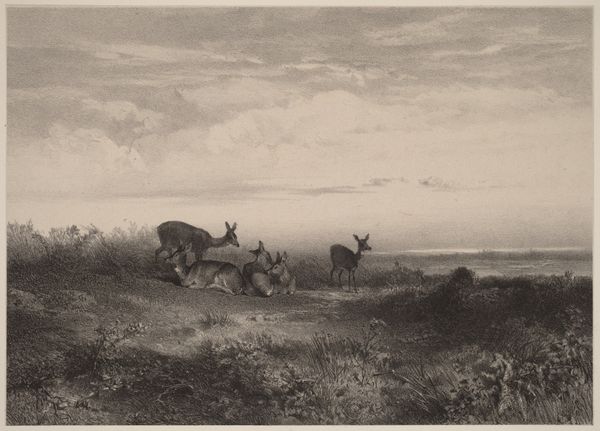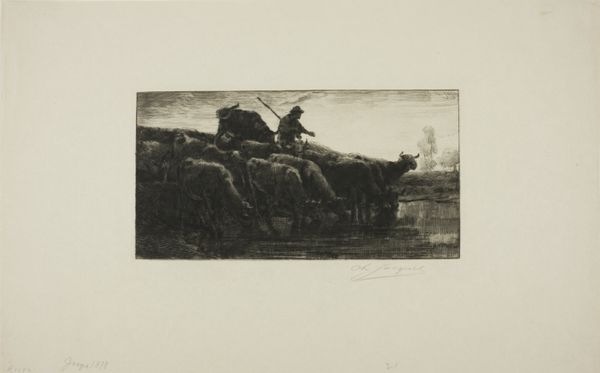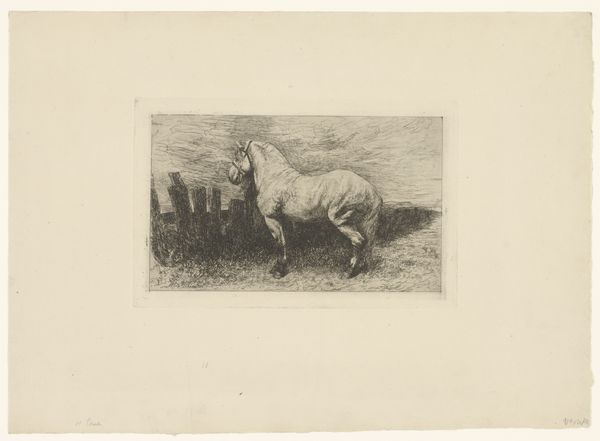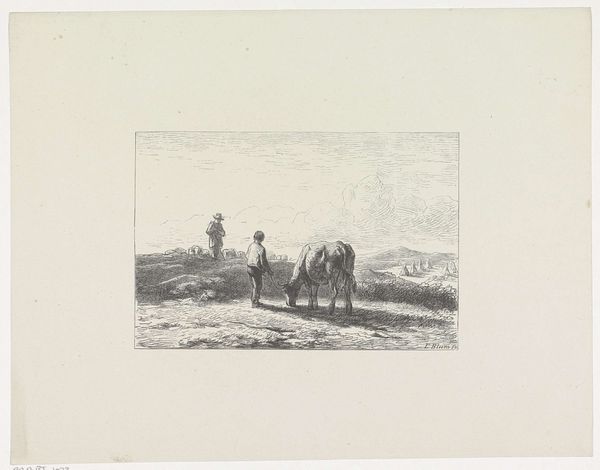
print, etching
#
dutch-golden-age
# print
#
etching
#
landscape
#
realism
Dimensions: height 102 mm, width 148 mm
Copyright: Rijks Museum: Open Domain
Editor: So, this is "Schelpenvisser," by Frederika Henriëtte Broeksmit, dated between 1885 and 1931. It's a print, an etching specifically. The first thing that strikes me is its bleakness, but also the incredible texture achieved with etching. What are your thoughts on it? Curator: The power of this image lies in its honest depiction of labor and its material conditions. Look closely at the etching; each line, each tonal variation, is the result of a physical act, an engagement with the copper plate, the acid, the press. It isn't just depicting a worker; it’s presenting us with the traces of a whole process. Consider also the choice of subject: what does it mean to depict this particular laborer rather than, say, a merchant? Editor: I see what you mean. The process is central. And choosing to represent a shell fisherman and their work is a statement in itself. What was the role of printmaking at the time in representing the working class? Curator: Precisely. Etching allowed for relatively inexpensive reproduction, enabling wider distribution of images depicting the lives of ordinary people. This challenged the dominant narratives perpetuated by the elite art world. But also, how does the landscape itself—seemingly barren and unwelcoming—contribute to the meaning of the artwork? Editor: It emphasizes the difficulty of their work, the harsh conditions they endure to scrape by, I suppose. The rough texture mirrors the landscape. I now see the artist emphasizing process and highlighting the fisherman's labor and social context, things I hadn't considered. Curator: Exactly. By paying attention to the materials, techniques, and the subject matter, we uncover a whole discourse around labor and social realities. Editor: Thank you, this was a fascinating reframing of the image!
Comments
No comments
Be the first to comment and join the conversation on the ultimate creative platform.
